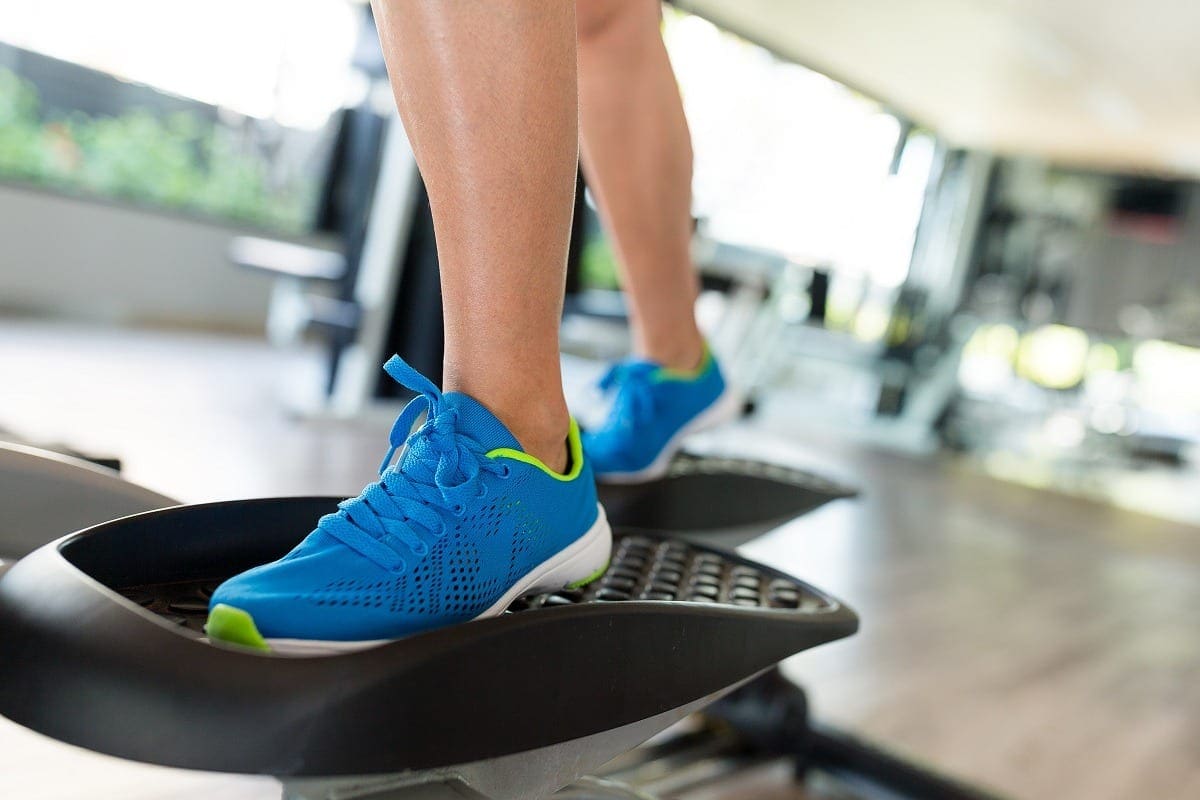
Plantar fasciitis can be a painful experience—especially if you’re an active person. Although it can be debilitating, there are some things you can so and ways to work around it.
What is Plantar Fasciitis?
First, what is plantar fasciitis? The injury originates from the plantar fascia, a connective tissue intertwined in a thick band. This is found at the bottom of your foot from you heel to your toes. When working correctly, it is a shock absorber that supports your weight when you walk at the arch of your foot.
When this fascia is constantly tensed up—with exercising, running, etc., there are tiny tears that are produced, which may make the fascia irritated and inflamed—resulting in pain for you. With this pain, you’ll feel a stabbing pain or a deep aching, depending on the intensity of the tear.
Although it also comes with time and exercise, you might feel the pain as soon as you get out of bed in the morning. This may make you feel like you cannot even workout, especially if that’s what your schedule is like first thing.
Plantar Fasciitis Treatments
One thing right off the bat that you want to know is how to treat it. Unfortunately, it doesn’t work for every person but with six weeks and the proper, conservative treatment, you can feel a little bit better. Here are a few things you can try:
- Stretching: A few times a day, whenever you get a break, you should stretch out your lower legs, calves, feet, and ankles.
- Ice: With most injuries, ice helps—especially if the cause of the pain has to do with inflammation. Since it’s a more difficult place to reach, you can use a frozen water bottle. A bottle has a curve proportionate with your foot.
- Massage: You can use a tennis ball, a foam roller or get a friend or partner to help. Being able to do this on your own also make it an easy form of treatment.
- Medication: If you are in a great deal of pain, basic anti-inflammatory and pain medication can help.
- Stay Off Your Feet: Principally speaking, this injury is a result of constant time on your feet. Therefore, if you can—cut back from exercise or work where you’re on your feet. Try a different alternative or strategy to get tasks done until the pain subsides.
- Look for New Shoes: For prevention of future plantar fasciitis, getting new shoes can help you avoid pain. Shoes with adequate arch support will definitely give your feet the break it needs. Avoiding the tear and strain in the fascia will help your feet deal with the pressure that it feels.
- Look for Shoe Inserts: If you don’t want to part with your shoes or aren’t looking to make a big purchase on some quality sneakers, you can easily add in shoe inserts. They can also last longer than shoes and be transferred from one pair of shoes to another. Shoe inserts are very versatile, regardless of the shoes you’re using. You can also either go cheap or expensive with this option. Lower priced inserts are at many drug stores, while custom inserts could cost hundreds of dollars.
- Finding the Proper Shoe Insert
When you find the proper shoe insert, make sure that you follow this two-step process:
- Pick inserts with deep heel cups. These inserts also support your heel arches. Especially if you have flat feet, low or moderate arches, these details can help give you the support you need to perform an exercise.
- If it doesn’t seem to immediately work right when you put them in, don’t be discouraged—just like shoes, inserts take a little while to break in. Therefore, the more you run, the better they will feel with time. As your feet move, the inserts will adjust to the physical attributes and properties of not only your feet but also your step. When you’re first getting your inserts, run in small segments, don’t just go off on a really long run.
How Can I Work Out with Plantar Fasciitis?
For the answer you’ve been waiting for—your misery doesn’t have to go on any longer. Especially if you’re an active athlete or person in general, it’s difficult to stay off your feet and we know that! The great thing to realize here is that you don’t have to stop working out with plantar fasciitis, you simply have to just make a few adjustments in your workout or workout regimen so you’re able to them, even if your pain hasn’t subsided. Until the pain is gone, try and stick to these examples and then slowly continue back to your regular workout. Staying fit while you’re feeling this pain is difficult but it is also possible.
Here are some exercise regimens that you can try that will minimize pain and still get you a good workout:
- Swimming—keeping you free of all physical pounding on your body that all exercises have, swimming is a fantastic exercise that is easy not only on the feet but also on the joints.
- Water Aerobics—another option if you don’t like swimming. It decreases your body weight and minimizes pounding.
- Running on the Elliptical Machine—it eliminates the pounding that comes with running but has the same physical effect.
- Weight Lifting—even though this isn’t seen as cardio, you can incorporate things like HIIT, a high-intensity interval training, that can help you get a sweat in.
- Biking with Hard Surface Shoes—especially with the shoe, you can get the support you need without the hard-hitting impact of running.
- Yoga—it keeps your body in shape, flexible, and works on your muscles, all at once.
- Rowing Machine—intensive cardio that engages your lower body without having all that impact.
With good news comes bad news. If you have plantar fasciitis, some workouts that you should avoid until the pain subsides are:
- Running
- Jumping
- Step Aerobics
- Walking for fitness
Also, in your best interest, especially if you’ve already invested in shoes or insole supports, try and to use them at all times—sometimes when you’re just in the house.
Although you might feel like you’ll never get better—with the proper treatment and attention, your plantar fasciitis will pass. In the meantime, we hope that you can stay in shape with these tips.

